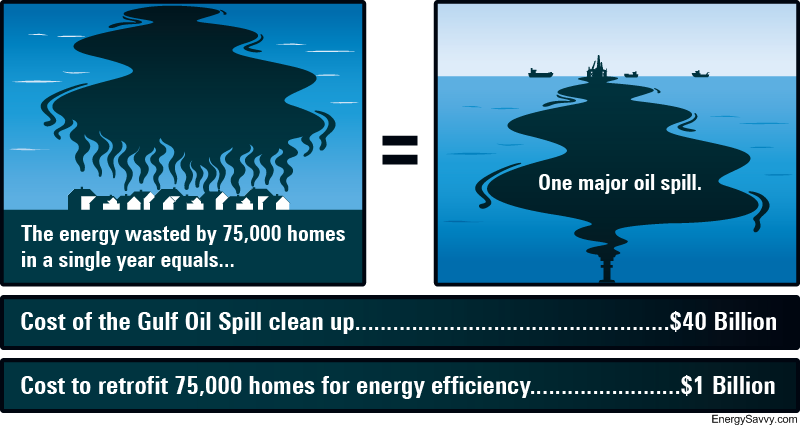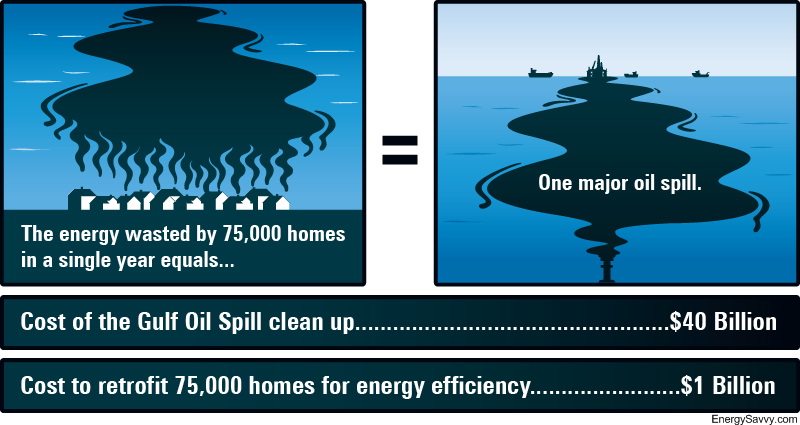Here’s a visceral way to represent potential energy savings in the built environment:
 Source: EnergySavvy
Source: EnergySavvy
That’s via the folks at Energy Savvy.
If only the Senate had some sort of legislative strategy that could put this information to use … oh, wait, it does! Home Star legislation will spur the retrofit of 3.3 million homes, enough to save the energy floating in the Gulf 44 times over, at roughly 1/40 the cost of mopping it up. As we speak, that legislation is languishing in the Senate. If its energy efficiency provisions are improved, the coming Senate energy bill could save even more energy and money. Perhaps senators could spend less time rending garments and encouraging Obama to Act Angry and more time passing the energy solutions sitting in front of them.
——
Here’s Energy Savvy’s explanation of the graphic:
• The energy contained in the biggest oil spill in U.S. history is equal to the energy that just 75,000 homes waste in a single year.
• The estimated cost to clean up the oil spill ($40 B) is many times greater than the cost to retrofit 75,000 houses ($1 B) and save the energy equivalent of the gulf oil spill every year.
• 75,000 houses = mid-sized U.S. city or large suburb of a major city, like Chattanooga, Tenn. or Providence, R.I.
• The oil spill, since it began in April 2010, has leaked between 25 – 50 million gallons of oil into the Gulf of Mexico. We’re using a conservative estimate of around 30 million gallons for our calculations.
• A typical house wastes 30 percent more energy than an efficient one does. On average, that means that 51 MMBtu’s are being wasted by a typical home every year.
• A typical home energy retrofit costs around $10,000 per house — before any utility or governments energy rebates are applied. A home energy retrofit doesn’t just save energy for a single year — it prevents waste year after year on an ongoing basis once it’s done.



